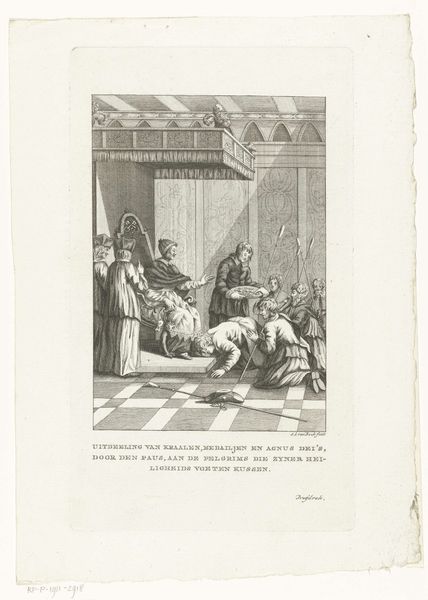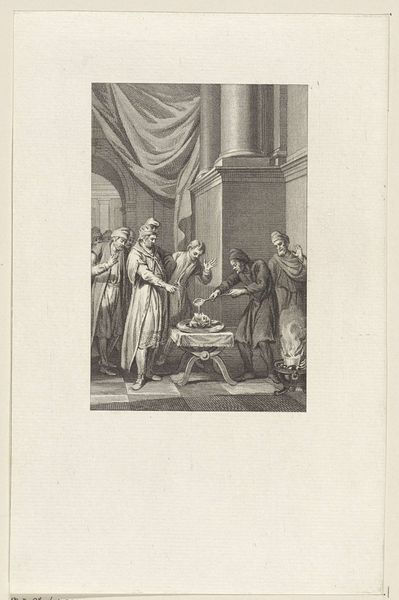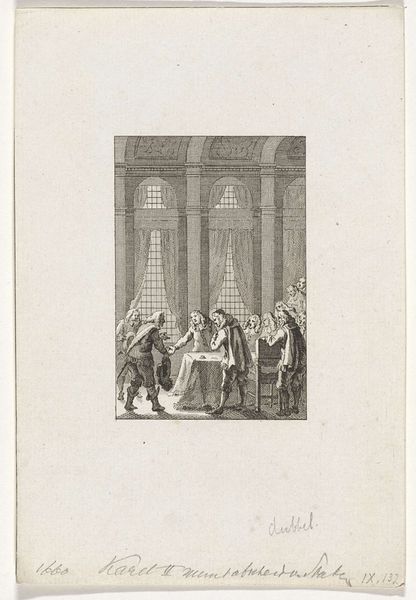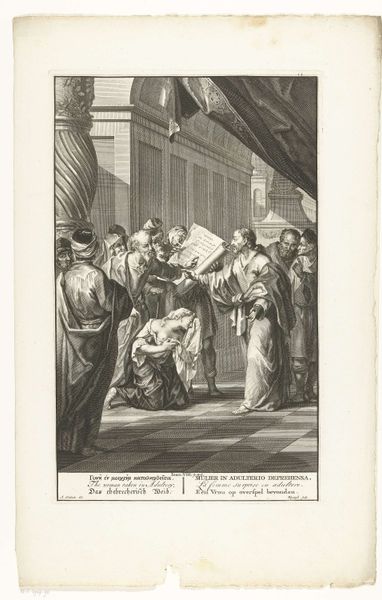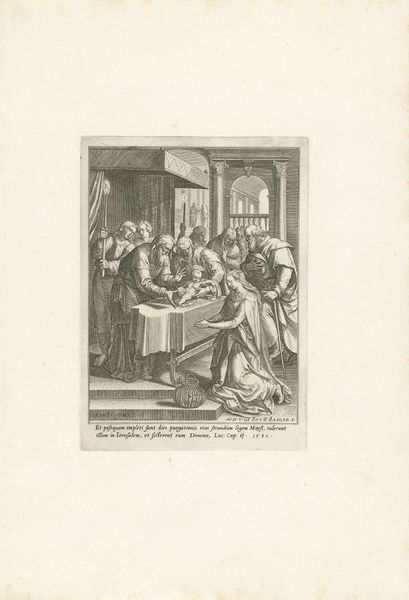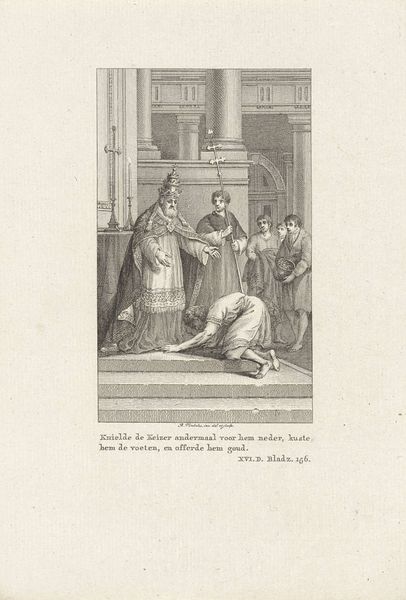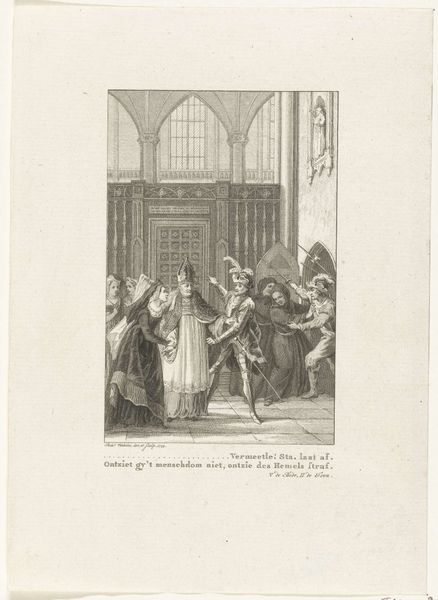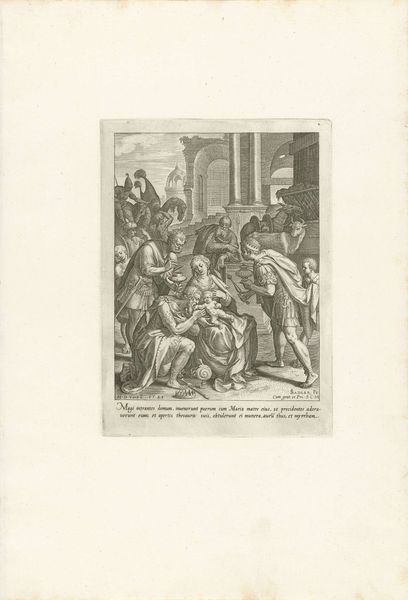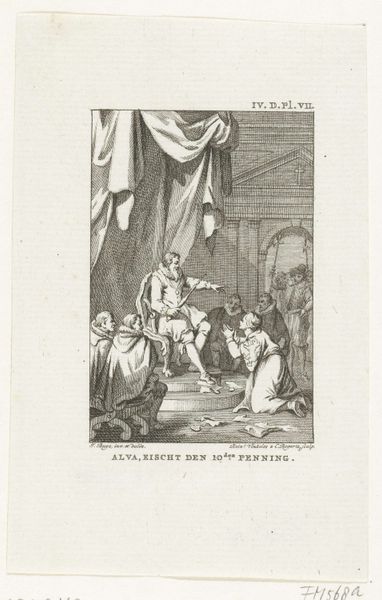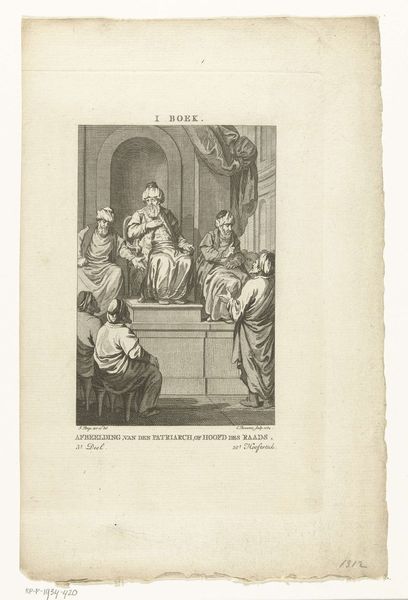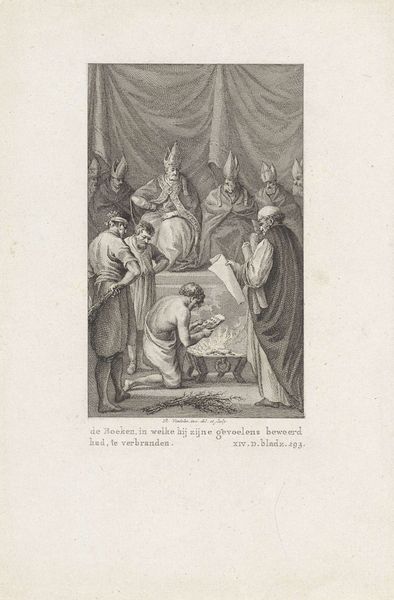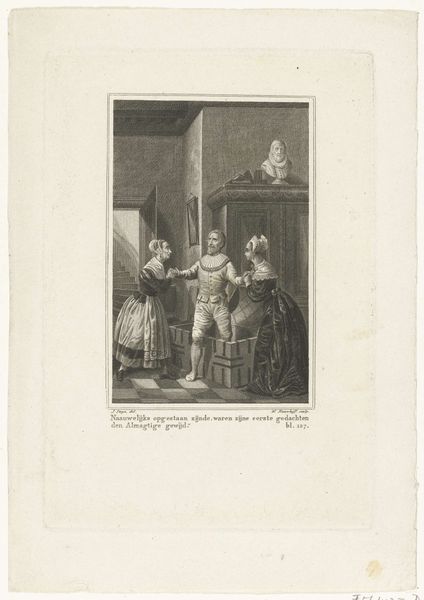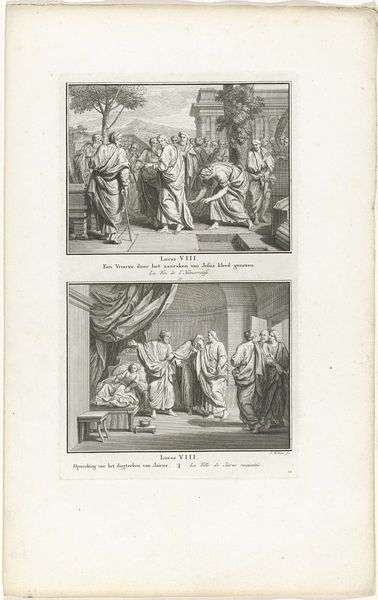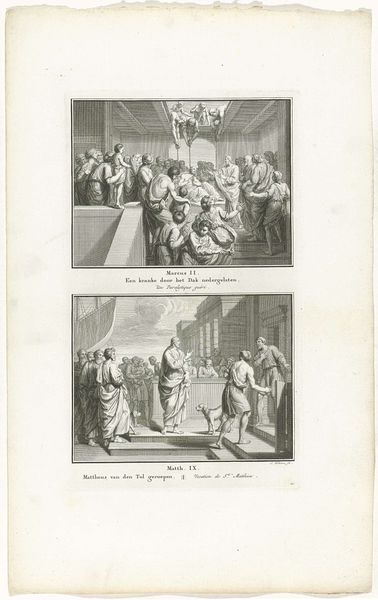
Dimensions: height 224 mm, width 135 mm
Copyright: Rijks Museum: Open Domain
Curator: Here we have a print from the period of 1763 to 1818, currently held in the Rijksmuseum. It’s entitled "Paus geeft opdracht tot bewaken van Heilige Deur." The artist is Jan Lucas van der Beek. Editor: It's strikingly stark. The use of light and shadow creates a dramatic effect, almost like a stage play frozen in time. The figures feel very formal, the setting equally severe. What’s the narrative being conveyed? Curator: This engraving illustrates a historical scene: the Pope entrusting the guarding of the Holy Door. The work demonstrates Baroque characteristics in its attention to detail, evident theatrical composition, and emotive characterizations, all packaged within a religious history painting. The inscription makes that point fairly explicitly, of course. Editor: So, how might this image have been received in its time? Given the context of the church, does the imagery signal particular messages of power and responsibility, reinforcing established social hierarchies? What purpose does the image serve by explicitly rendering in great detail the transfer of power from the papacy? Curator: Undoubtedly, this image played a part in the political theater surrounding the papacy. Printmaking allowed the propagation of certain images in order to further political, and in this case religious goals. Images like this, and others surrounding religious topics, have become charged given events like the Reformation, making images such as these statements of loyalty, a reinforcement of power for the ruling religious bodies. Editor: I wonder, considering contemporary readings, if it also presents anxieties surrounding power. Does the visual language inadvertently reveal instability within the Church through this rigid and somewhat performative depiction? Curator: An interesting lens, definitely, though a difficult claim to verify concretely in this specific case. Perhaps a fruitful research direction to consider, indeed. The dialogue itself may speak volumes to a given audience member as well. Editor: Precisely, and by considering how power operates performatively, through gestures and symbolism, we can understand the visual narratives as contested sites where social anxieties get subtly, perhaps even unconsciously, expressed. The image gives a great point of entry to dissecting themes around authority and compliance in complex historical structures. Curator: I see it through a slightly different prism—perhaps less through subtle anxieties and more as a conscious act of self-representation. But I recognize the value of those interpretive pathways for deeper engagement with the artwork.
Comments
No comments
Be the first to comment and join the conversation on the ultimate creative platform.
